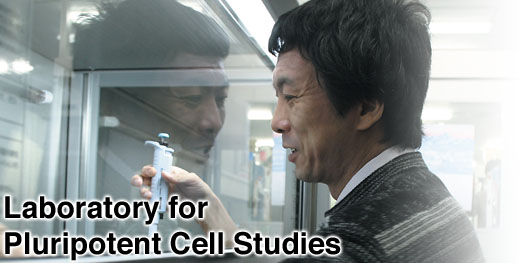




     |

Pluripotency is a term used to describe the ability of certain types of stem cells that are capable of giving rise to at least one type of cell from all three germ layers – endoderm, mesoderm and ectoderm. Stem cells are also characterized by their ability to produce copies of themselves with similar differentiative potential as well as more specialized cells with different properties through differentiation. Embryonic stem (ES) cells are the best known example of a type of stem cell possessing these properties of pluripotency and self-renewal. In our lab, we use ES cells as a model system for studying the molecular mechanisms that determine and enable the mysterious properties of pluripotent cells.
In previous work, we identified a peptide hormone that works to maintain the ability of ES cells to self-renew and developed an ES culture medium using fully characterized components. These developments were made in parallel with studies aimed at resolving the functions of genes involved in the maintenance of stem cells in an undifferentiated state and the induction of differentiation. We have also identified a transcriptional factor that directs differentiation into placenta and yolk sac. Given their ability to generate all of the body's cell types, ES cells have come to stand as a symbol for the emerging fields of cell replacement therapy and regenerative medicine, but they also represent an ideal system for the study of many of the processes of early mammalian embryonic development. The study of the basic biology of stem cells may one day bear fruit in the development of culture methods suitable for ES cells intended for clinical use or techniques for inducing differentiated cells to revert to a pluripotent state, while at the same time providing fundamental new insights into the differentiation of extra-embryonic tissues in the earliest phases of mammalian development.